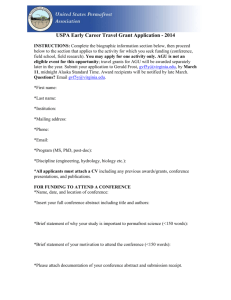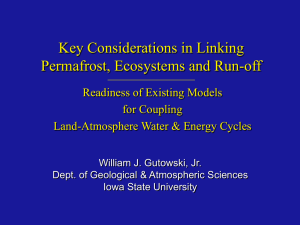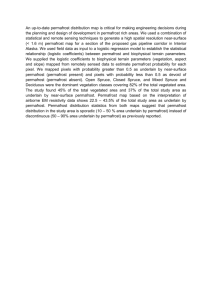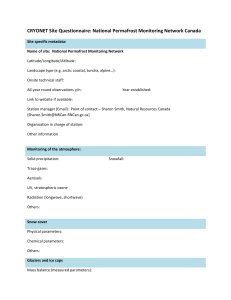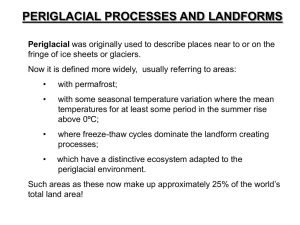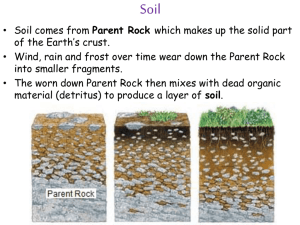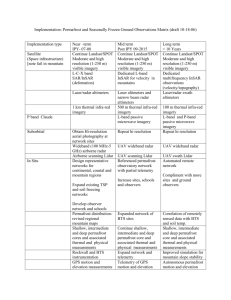Part 3—Use Google Earth to Locate Chersky, Russia
advertisement
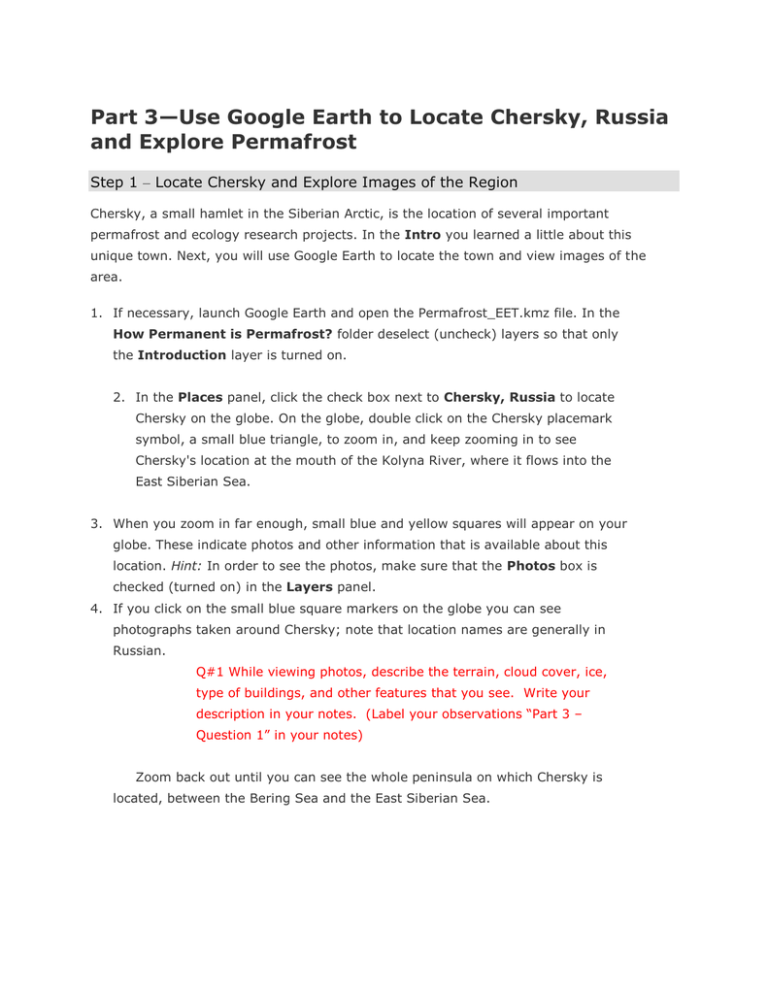
Part 3—Use Google Earth to Locate Chersky, Russia and Explore Permafrost Step 1 – Locate Chersky and Explore Images of the Region Chersky, a small hamlet in the Siberian Arctic, is the location of several important permafrost and ecology research projects. In the Intro you learned a little about this unique town. Next, you will use Google Earth to locate the town and view images of the area. 1. If necessary, launch Google Earth and open the Permafrost_EET.kmz file. In the How Permanent is Permafrost? folder deselect (uncheck) layers so that only the Introduction layer is turned on. 2. In the Places panel, click the check box next to Chersky, Russia to locate Chersky on the globe. On the globe, double click on the Chersky placemark symbol, a small blue triangle, to zoom in, and keep zooming in to see Chersky's location at the mouth of the Kolyna River, where it flows into the East Siberian Sea. 3. When you zoom in far enough, small blue and yellow squares will appear on your globe. These indicate photos and other information that is available about this location. Hint: In order to see the photos, make sure that the Photos box is checked (turned on) in the Layers panel. 4. If you click on the small blue square markers on the globe you can see photographs taken around Chersky; note that location names are generally in Russian. Q#1 While viewing photos, describe the terrain, cloud cover, ice, type of buildings, and other features that you see. Write your description in your notes. (Label your observations “Part 3 – Question 1” in your notes) Zoom back out until you can see the whole peninsula on which Chersky is located, between the Bering Sea and the East Siberian Sea. Step 2 – Locate the Permafrost Borehole Locations 1. In the Places panel, check the box next to the folder labeled Borehole Locations. Five borehole locations will be indicated on the map by snowflake placemarks. On the globe, click on a snowflake (placemark). A window of information opens that indicates the latitude and longitude of the borehole, and has a link to the "Borehole dataset" on the NSIDC Website. Step 3 – Investigate Permafrost Types 1. Leaving the placemarks for Chersky and the Borehole Locations on, turn on the Permafrost Map layer. This overlay shows the distribution of permafrost over northern Russia and the rest of the Arctic. Zoom out to see more of the region. Q#2 With the map key and the description text below as your guide, summarize which types of permafrost are found in this region of the world. Types of Permafrost Subsea Permafrost—This permafrost was formed more than 11,000 years ago, during the last ice age. During that era, more of Earth's water was stored as ice on land causing sea level to be lower than it is today. Therefore, more land was exposed, and some of it froze into permafrost. When the ice age ended, the seas rose again. As the sea level rose, the oceans covered up these areas of permafrost. Today, some of the sea floor is frozen up to 100 meters (328 feet) thick under the bottom of the ocean. Subsea Permafrost only exists in the Arctic Ocean. Relict Permafrost—This is a type of permafrost existing in areas where permafrost cannot form under present climatic conditions; it reflects past climatic conditions that were colder. Continuous Permafrost—This area is where permafrost covers greater than 90 percent of the land surface. Discontinuous Permafrost—This area is where permafrost covers between 50 and 90 percent of the land surface. Sporadic Permafrost—This area is where permafrost covers between 10 and 50 percent of the land surface. Isolated Permafrost—This area is where permafrost covers less than 10 percent of the land surface. Text adapted from: http://nsidc.org/frozenground/whereis_fg.html Q#3 What kind of permafrost underlies Chersky and the nearby borehole sites? Which borehole site data might be most like what you would find in the Chersky area? Which is the least similar?
